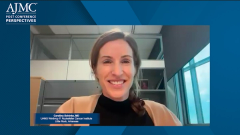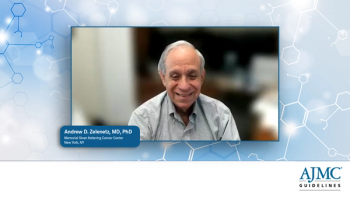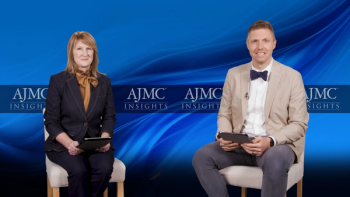
Setting the Stage and New Milestones in Talquetamab Data
A panelist discusses the latest advancements presented at ASCO 2025, highlighting talquetamab’s pivotal trial in relapsed/refractory multiple myeloma that demonstrated high response rates and longer durability with biweekly dosing, including in patients previously treated with B-cell maturation antigen–targeted therapies, supporting sequencing and combination strategies to improve outcomes.
Prior to ASCO 2025, 3 bispecific antibodies had become commercially available for relapsed, refractory multiple myeloma—2 targeting BCMA and 1 targeting GPRC5D. These therapies have demonstrated strong efficacy, but ongoing research is focused on further improving their effectiveness. Three main strategies are being explored: moving bispecifics to earlier treatment lines, combining them with existing multiple myeloma therapies such as proteasome inhibitors, and developing trispecific antibodies that target multiple antigens simultaneously. The oncology community eagerly awaited data on these combination approaches at ASCO 2025.
A key highlight was the pivotal trial of talquetamab, the GPRC5D-targeting bispecific antibody. This study tested 2 dosing regimens—a weekly lower dose and a biweekly higher dose—and included patients who had previously received B-cell maturation antigen (BCMA)–targeted therapies. The overall response rates were around 70% across all groups, with the biweekly dosing schedule showing a longer median duration of response (~17.5 months vs ~9.5 months) and improved progression-free survival (~11.2 vs 7.5 months). The hypothesis is that less frequent dosing allows T cells to recover better, reducing exhaustion and enhancing response durability.
Encouragingly, patients previously treated with BCMA-directed therapies also achieved high response rates (~70%) to talquetamab, with a median duration of response around 19 months. Overall survival data were similarly favorable, with the biweekly schedule demonstrating a survival benefit that had not yet been reached at median follow-up, compared to 34 months for weekly dosing and 28.3 months for those with prior BCMA exposure. These results support the strategy of sequencing different T-cell–engaging therapies to extend survival, even after progression on initial immune-based treatments.
Newsletter
Stay ahead of policy, cost, and value—subscribe to AJMC for expert insights at the intersection of clinical care and health economics.












































